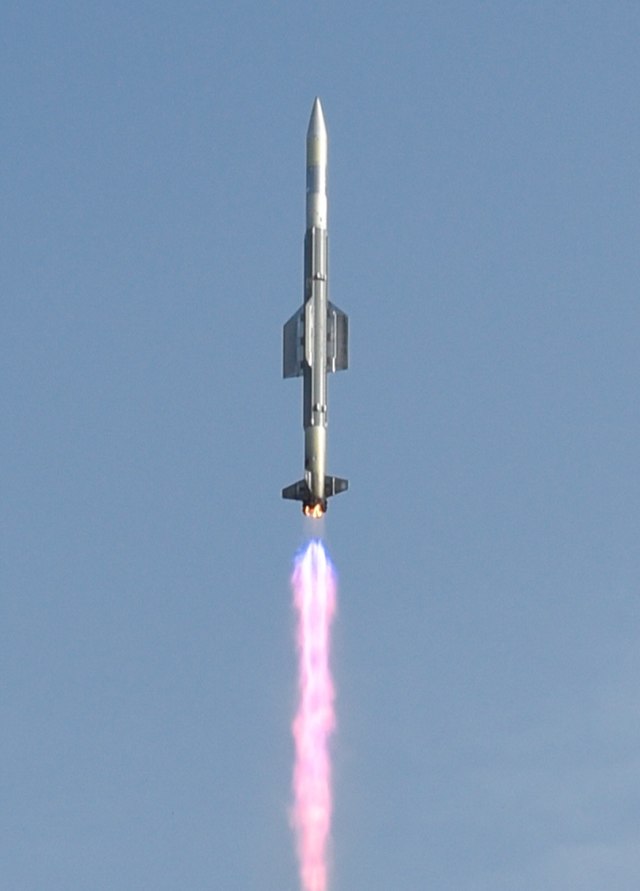Context
-
The VL-SRSAM i.e. Vertical Launch Short Range Surface to Air Missile designed for Indian Naval warships was successfully flight tested earlier by India for the second consecutive time.
What is VL-SRSAM?
- VL-SRSAM has been designed and developed jointly by three facilities of the Defence Research and Development Organisation for deployment of Indian Naval warships.
- The missile has the capability of neutralising various aerial threats at close ranges including sea-skimming targets.
- The tactic of sea skimming is used by various anti-ship missiles and some fighter jets to avoid being detected by the radars onboard warships. For this, these assets fly as close as possible to sea surface and thus are difficult to detect and neutralise.
The design of VL-SRSAM
- The missile has been designed to strike at the high-speed airborne targets at the range of 40 to 50 km and at an altitude of around 15 km.
- Its design is based on Astra missile which is a Beyond Visual Range Air to Air missile.
- Two key features of the VL-SRSAM are cruciform wings and thrust vectoring.

Credit: Wikipedia - The cruciform wings are four small wings arranged like a cross on four sides and give the projective a stable aerodynamic posture.
- The thrust vectoring is an ability to change the direction of the thrust from its engine control the angular velocity and the attitude of the missile.
- The key DRDO facilities that contributed to the development of the system are
- Defence Research and Development Laboratory (DRDL) & Research Centre Imarat (RCI), both from Hyderabad
- Research & Development Establishment (Engineers) based in Pune.
- VL-SRSAM is a canisterised system, which means it is stored and operated from specially designed compartments.
- In the canister, the inside environment is controlled, thus making its transport and storage easier and improving the shelf life of weapons.
Strategic significance of the missile
- The launch was conducted from a vertical launcher against an electronic target at a very low altitude.
- The launch of the system was conducted to validate integrated operation of all weapon system components including the vertical launcher unit with controller, canisterised flight vehicle, weapon control system.
- The successful testing of these systems was crucial for future launches of the missile from Indian Naval Ships.
- In Naval warfare, a warship has to employ various defence mechanisms to protect itself from anti-ship missiles and adversary aircraft.
- One of the age-old methods is chaffs — which is a countermeasure technology used worldwide to protect naval ships from enemy’s radar and Radio Frequency (RF) missile seekers.
- Another method is deploying missiles to counter Anti Ship missiles. These systems have to have a swift detection mechanism, quick response, high speed and high manoeuvrability.
- The VL-SRSAM claims to have all these qualities. However, it will have to undergo tests in different conditions and configurations to be ready for deployment on board Indian Naval Ships.
Visit Abhiyan PEDIA (One of the Most Followed / Recommended) for UPSC Revisions: Click Here
IAS Abhiyan is now on Telegram: Click on the Below link to Join our Channels to stay Updated
IAS Abhiyan Official: Click Here to Join
For UPSC Mains Value Edition (Facts, Quotes, Best Practices, Case Studies): Click Here to Join
